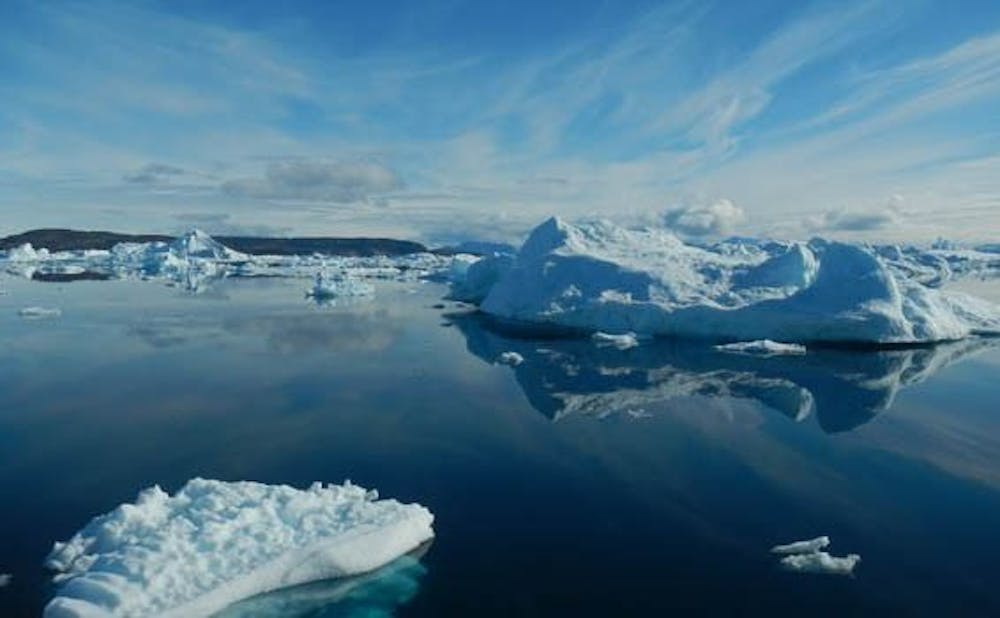A recent oceanography study sponsored by Duke, along with other institutions, discovered new insight into how the ocean circulates.
Oceanographers have long predicted that climate change may slow down the Atlantic Meridional Overturning Circulation—also known as the ocean’s “conveyor belt”—which is the system of currents that regulates heat in the Atlantic Ocean. Previous models suggested that this system was largely influenced by cold freshwater sinking in the Labrador Sea. However, recent research has shown previous simulations to be incorrect regarding the location where "overturning" occurs.
Susan Lozier, Ronie-Richele Garcia-Johnson professor of earth and ocean sciences, worked with scientists from seven countries on a project called Overturning in the Subpolar North Atlantic Program (OSNAP). Their first paper—published in the February 2019 issue of Science—found that the overturning is not occurring in the Labrador Sea, as predicted, but instead further east of Greenland.
“I would say that physical oceanographers are interested in where the water goes and why, but everyone interested in the climate wants to know where the heat is going, where the fresh water is going and how carbon is being taken up by the ocean,” Lozier said. “That’s really the larger reason to understand the overturning circulation.”
The study measured 21 months of movement in the ocean using instruments located both west and east of Greenland and in the mid-Atlantic. The instruments were anchored to the ocean floor but equipped with flotation devices to keep the system straight and to place each measuring instrument at a precise depth, Lozier explained.
The data from the sensors suggested that a North Atlantic region, east of Greenland, had greater influence on the overturning circulation than the Labrador Sea.
In addition to redistributing heat, the overturning circulation is also responsible for storing about 30 percent of the carbon dioxide that has been produced since the Industrial Revolution, Lozier added.
At higher latitudes where the upper layer of the ocean mixes into the deeper layer, carbon dioxide is brought down into the deep ocean and trapped. This takes the carbon dioxide out of the atmosphere but can have devastating consequences on the ocean such as lowering its pH, she explained.
Scientists at OSNAP are interested in understanding exactly how overturning circulation functions in order to understand how potential climate changes would impact this process. Knowing where this circulation takes place will allow them to continue their research into potential consequences. All of the measuring equipment remains in the water for future research.
Lozier said she was specifically interested in the heat that is redistributed to the Arctic, which plays a role in the melting of glaciers, and sea ice bringing fresh water back into the system.
“Now we want to know how the overturning circulation will change as we move forward in time,” Lozier said. “We’ve really been focused on the Labrador Sea, trying to understand if glacier melt is freshening the sea or how warm the waters are there, when really we should be focusing on the waters in the eastern part of the basin.”
Get The Chronicle straight to your inbox
Signup for our weekly newsletter. Cancel at any time.

